
In this insightful blog post, we will explore the fundamental concepts of unity and variety or contrast in the context of fashion design and how they come together to create harmony in garments. We will explore different methods and techniques with examples, employed by skilled fashion designers to achieve harmony in dress design.
Table of Content
- Unity in Fashion Design
- Variety in Fashion Design
- Harmony: Emphasizing Unity Over Contrast
- Different Types of Harmony in Fashion Design
- What is the importance of harmony in fashion design?
- Is harmony the same as unity?
- Exercise
- Conclusion
- All Topics on Principles of Design in Fashion
- All Topics on Elements of Design in Fashion
- Explore Free Courses
- Join Fashion Designing Course
Unity in Fashion Design
Unity in fashion design refers to the intentional repetition of a specific design element throughout a garment, resulting in a cohesive and harmonious appearance. Conversely, when too many different motifs are incorporated into one garment, it can lead to distractions and a lack of harmony.
A garment achieves unity when its separate elements work together seamlessly to form a cohesive whole. This cohesiveness generates a sense of togetherness and completeness in the overall design.
For instance, consider the dress shown on the left. The presence of tailored seams is incongruous with the fluffiness of the top, resulting in a lack of unity.
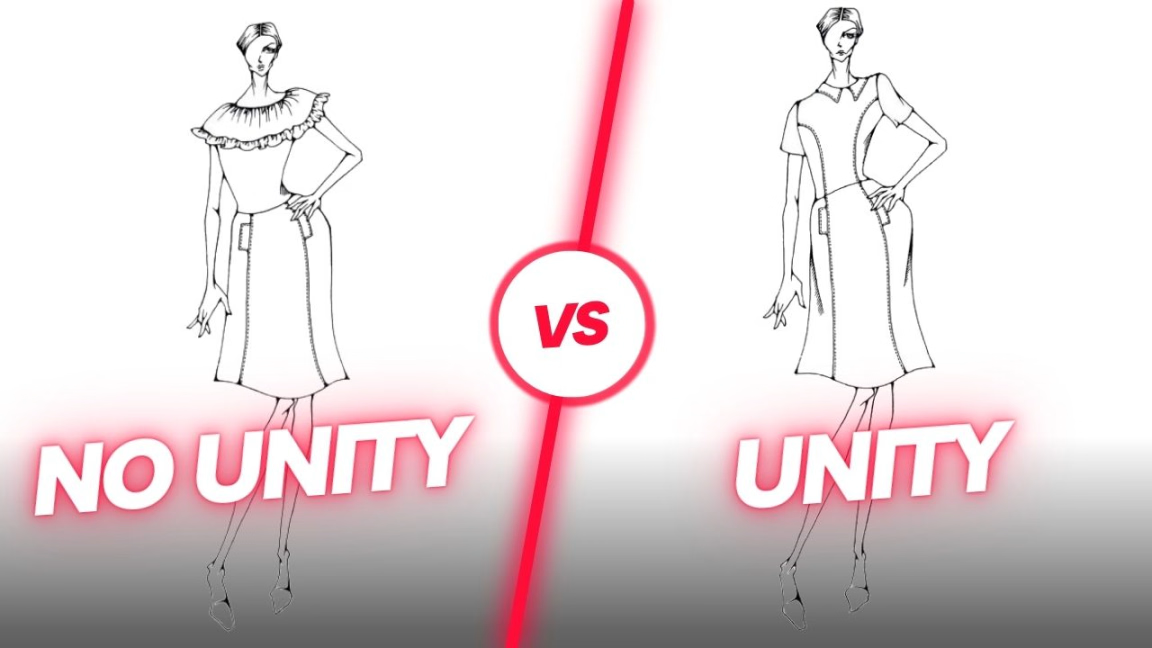
Consider the dress on the right. The unity is successfully achieved by tailored seams covering the whole dress.
To create a unified design, each design element must complement and enhance the others, allowing the garment to flow effortlessly as a harmonious ensemble. When unity is successfully achieved, the overall effect is visually appealing, sophisticated, and refined. The intentional repetition of certain design elements throughout the garment ensures that every part contributes to the overall coherence and oneness of the design, leading to an aesthetically pleasing and well-balanced creation.
Variety in Fashion Design
In the realm of fashion design, variety plays a crucial role in elevating the appeal of garments. It is a design principle that introduces diversity and uniqueness, relieving plain or monotonous designs by offering the eye an array of captivating and distinctive details to admire. Variety and contrast are terms often used interchangeably in fashion design.
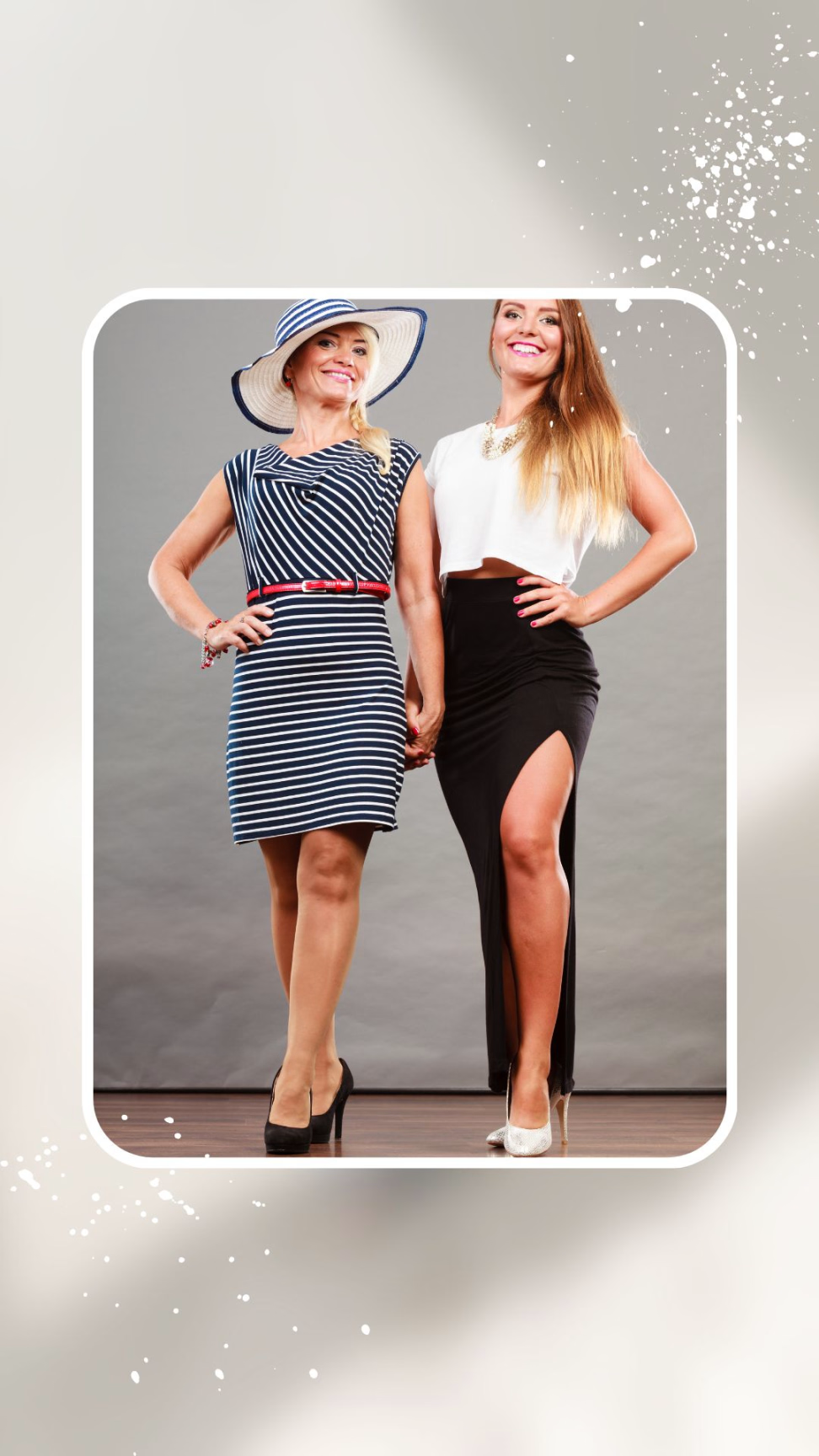
In the image above, the incorporation of diagonal stripes for the lady on the left and the shift in color between the top and bottom garments introduce variety to the design, effectively eliminating any sense of monotony or dullness.
Harmony: Emphasizing Unity Over Contrast
Harmony in fashion design is not solely the exact opposite of contrast; rather, it places greater emphasis on achieving unity while incorporating some variety in elements to avoid producing a less impactful or conservative outcome. While following the absolute rules of harmony ensures a safe and cohesive design, it may sometimes lead to a conservative look lacking visual impact. To prevent this, designers sometimes introduce elements that add a touch of variety, elevating the overall design and creating a more captivating and visually striking result.
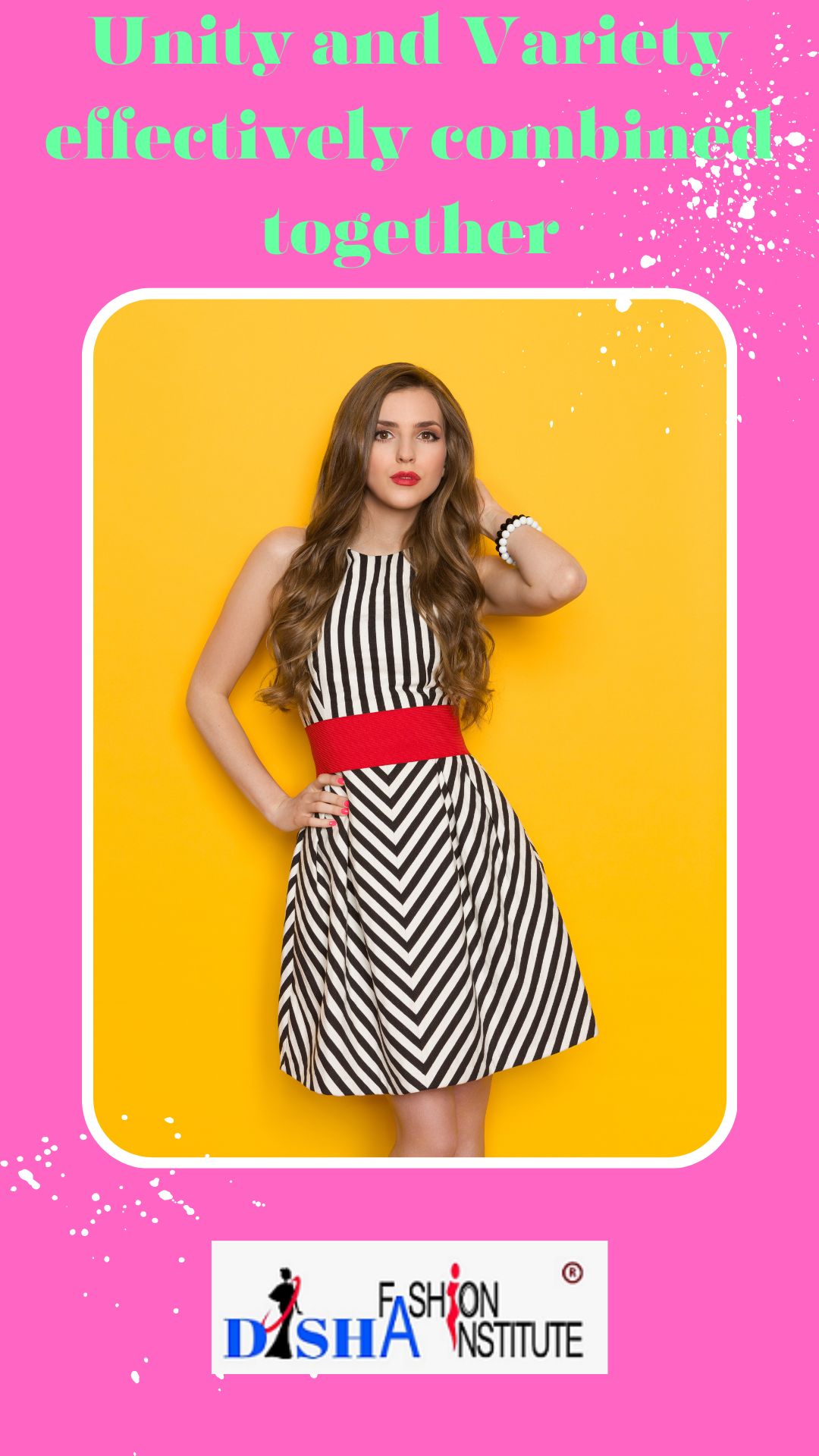
In the dress worn by the elegant lady above, the repetition of lines creates a harmonious unity, while the combination of horizontal and diagonal lines introduces a sense of variety, resulting in a balanced and harmonious look.
Different Types of Harmony in Fashion Design
Colour Harmony in Fashion Design
Selecting colours that complement each other and work well together is crucial in creating a harmonious design. This method can involve using various types of color schemes e.g. analogous colours (colours that are next to each other on the colour wheel), complementary colours (colours that are opposite each other on the colour wheel), or monochromatic colours ( different shades, tints, and tones of single colour) to create balance and unity. We have a separate blog post on color theory and color harmony.
Color Theory in Fashion Design
Harmony in Fashion Design by Proportion and Balance
Harmonious designs consider the proportions of the garment, ensuring that the various elements, such as sleeves, neckline, and hemlines, are well-balanced and visually pleasing. Proportions should be chosen based on the wearer's body type and the overall aesthetic of the design.
For example, the lapel size of a suit should be proportionate to the wearer's body frame. A balanced suit will have lapels that are neither too large nor too small, in harmony with the overall dimensions of the jacket.
[smaller lapel for the small and slender body]
[larger for the big body]
Harmony in Fashion Design by Texture and Fabric
The choice of fabrics and textures can significantly impact the harmony of a fashion design. Combining different textures can add depth and interest to the garment while maintaining a cohesive look.
Harmony in Fashion Design by Silhouette and Shape
A garment's overall shape and silhouette contribute to its harmony. Designers must consider the lines and shapes created by the clothing on the body and ensure they complement the wearer's body shape and overall style, avoiding or hiding the wearer's concerned body parts.
This fit-and-flare dress is a perfect example of silhouette and shape harmony, emphasizing the waist to create a well-proportioned and feminine silhouette. The cinched waist visually slims the midsection and creates an appealing curve.
Harmony in Fashion Design by Detailing and Embellishments
The use of detailing and embellishments can enhance or disrupt harmony in a design. Careful placement and consideration of these elements are essential to avoid overwhelming the overall look.
For example, The bohemian maxi dress adorned with delicate embroidery along the neckline, sleeves, and hem features floral patterns and intricate designs, reflecting the bohemian theme. This is a perfect example of harmony, which depicts a sense of romance and freedom.
Harmony in Fashion Design by Theme and Inspiration
A well-defined theme or inspiration can help tie together various design elements, creating a sense of harmony throughout the collection. Whether it's nature-inspired, retro-themed, or culture-based, a clear concept can guide the design process and unify the collection.
(Dolce & Gabbana)
(Georges Hobeika)
What is the importance of harmony in fashion design?
Harmony is of paramount importance in the fashion industry for several reasons.
Visual Appeal
Harmonious designs are visually pleasing and captivating to the audience. They create a sense of balance and coherence that draws attention and appreciation, making garments more appealing to potential customers.
Professionalism and Quality
The ability to achieve harmony demonstrates the skill and expertise of fashion designers. Harmonious collections signify professionalism and attention to detail, enhancing a brand's reputation for quality and craftsmanship.
Consumer Satisfaction
Harmonious designs enhance consumer satisfaction, as customers feel confident and stylish in well-balanced and aesthetically pleasing garments. Satisfied customers are more likely to be loyal to a brand and recommend it to others.
Artistic Expression
Fashion is an art form, and harmony allows designers to express their creativity and vision fully. It empowers them to tell stories, evoke emotions, and make a meaningful impact through their designs.
Is harmony the same as unity?
Harmony and unity are intricately linked concepts, and they can be perceived as interconnected. Nevertheless, in a harmonious design, there is room for variety or contrast to coexist, leading to a balanced composition that prevents the dress from appearing dull. The diverse elements within the dress work together cohesively, complementing each other and contributing to the overall visual appeal.
Exercise
Please examine the image provided below and share your thoughts in the comment section regarding whether you believe this design showcases harmony or not. Explain the reasons behind your perspective and observations on how the elements in the design come together or potentially lack cohesion.
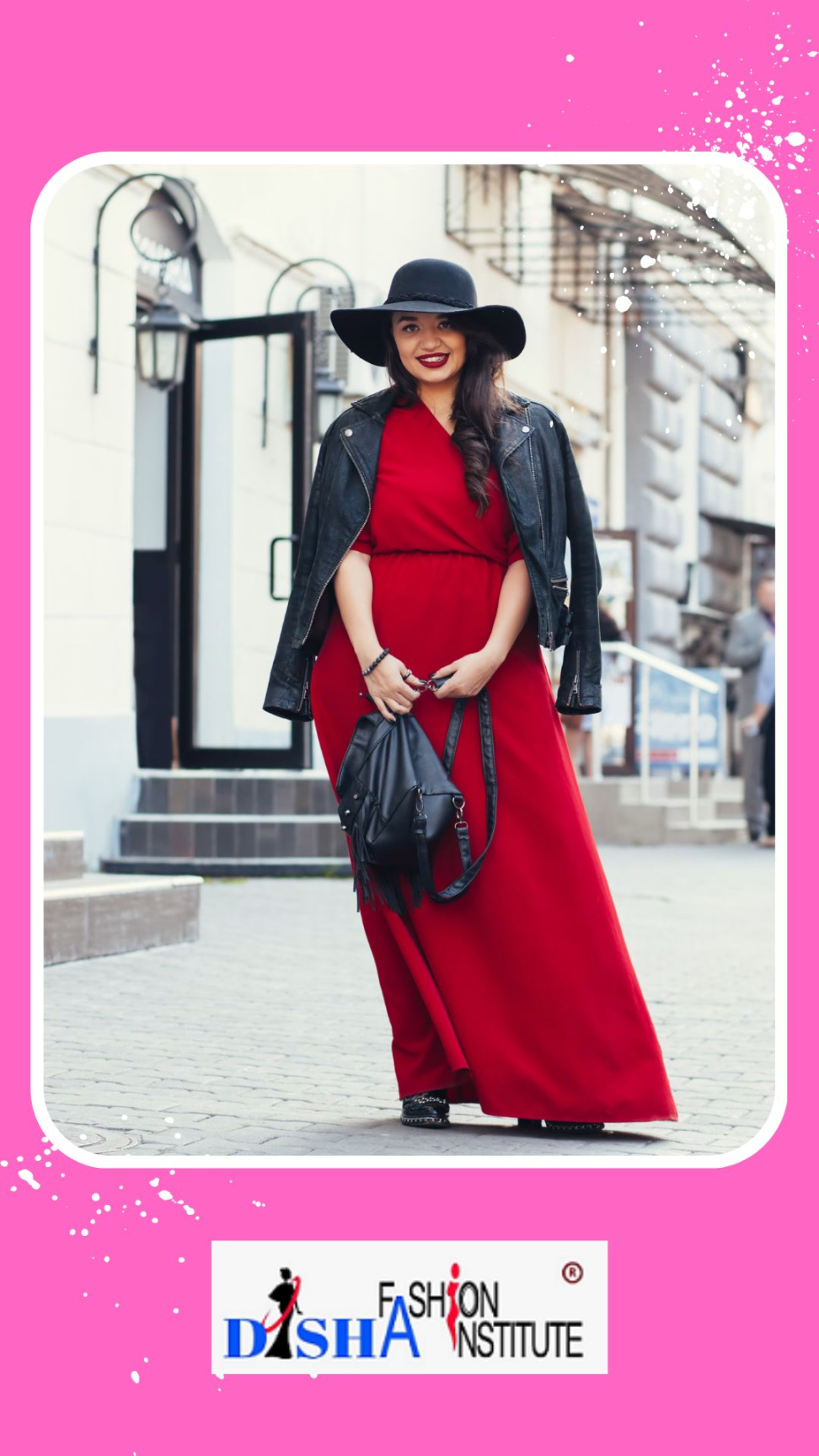
Conclusion
Successful use of harmony in fashion design requires an understanding of design principles and an ability to balance different design elements in a way that is pleasing to the eye. Designers must also be skilled and careful while selecting fabrics and materials that will reflect the aesthetic and maintain the overall integrity of the garment.
When harmony is achieved, the result is a collection of garments that create a unified and harmonious look. So harmony is an important principle of fashion design that helps designers create a visually pleasing and aesthetically balanced design.
All Topics on Principles of Design in Fashion
To explore all topics on principles of design in fashion, browse the list of blog posts below and click on the relevant heading to access the articles.
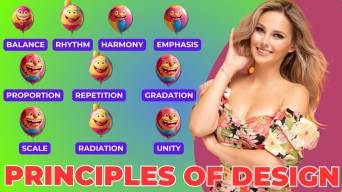
Principles of Design in Fashion
11 Principles of Design in Fashion You Need to Know to Become a Fashion Designer
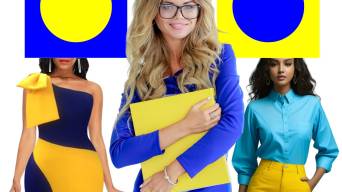
How to Contrast Colors for Clothing
How to Contrast Colors for Clothing | 8 Ways to Create Colour Contrast in Fashion
All Topics on Elements of Design in Fashion
To delve into all the subjects about elements of design in fashion, simply navigate through the list of blog posts below. Click on the headings to access the articles you're interested in reading.

Elements of Design Line in Fashion
Elements of Design | Lines in Fashion | Creating Optical Illusions With Lines
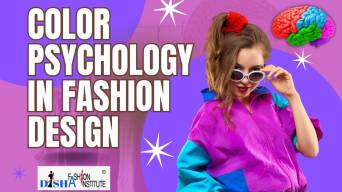
Color Psychology in Fashion Design
Impact of Color Psychology on Fashion Design: Exploring 12 Transformative Role of Color
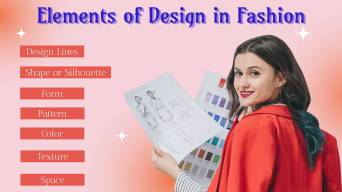
Elements of Design in Fashion
7 Elements of Design in Fashion You Must Understand as a Fashion Designer
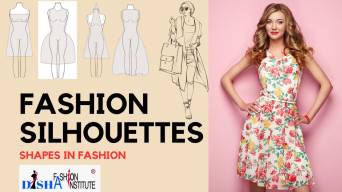
Types of Silhouettes in Fashion
Types of Silhouettes in Fashion | 12 Different Types of Fashion Silhouettes Explained
Explore Free Courses
Begin your fashion journey with our free fashion design foundation course. Dive into the world of style and creation today!
Fashion Designing Foundation Course
Join Fashion Designing Course
Enrol in our certificate courses for fashion designing and textile designing






Add comment